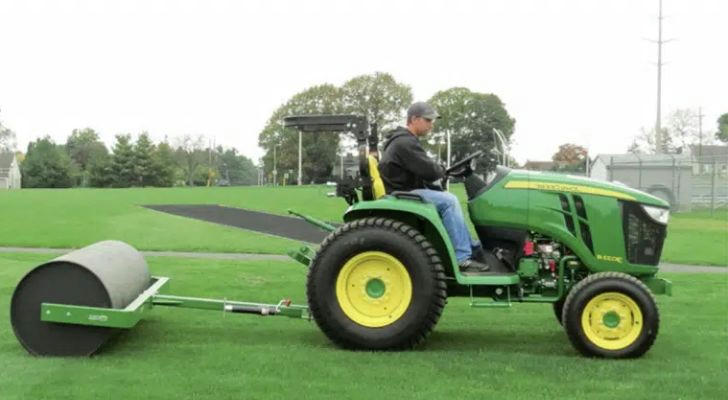Roll It, Crush It, Love It: Your 2025 Guide to Rollers for Lawns and Roads
Whether you’re chasing that flawless putting-green lawn or paving a smooth driveway, rollers are the unsung heroes that make the magic happen. In 2025, basic lawn rollers start at under a hundred dollars, while entry-level walk-behind steamrollers begin around four thousand. From push-behind polyethylene drums to cab-equipped tandem drums, here’s your full rundown of five roller classes, their real-world prices, what drives those costs, and insider tips so you can create perfect surfaces—grass or asphalt—without crushing your wallet.

1. Pocket-Sized Push-Behind Lawn Rollers: Under One Hundred
Price: About ninety-five dollars
Who It’s For: Homeowners with tiny patches of lawn or garden beds
Why You’ll Love It: A sixty-pound polyethylene drum resists dents and rust. Fills with water or sand for up to one hundred fifty pounds of compaction. Folds flat for easy garage storage.
Keep in Mind: Light weight means multiple passes to flatten mounds. Ideal for light sod pressing and seed setting, not heavy turf leveling.
2. Tow-Behind Poly and Steel Lawn Rollers: Under Three Hundred
Price: Between one seventy-five and two ninety dollars
Who It’s For: Medium lawns up to one quarter acre, rental fleets, small landscapers
Why You’ll Love It: Polyethylene models fill to three hundred pounds and never rust. Steel drums hold six hundred pounds for tougher flattening. Quick-attach hitches fit most garden tractors and ATVs.
Keep in Mind: Tow speed should stay under four miles per hour. Poly models need full fill for best effect; steel rollers are heavier to hitch.
3. Walk-Behind Steamrollers: Entry-Level Asphalt Crushers
Price: Roughly four thousand two hundred dollars
Who It’s For: Driveway patch crews, DIY asphalt installers, municipal maintenance
Why You’ll Love It: A 600-pound steel drum and reversible vibration get the job done on patch, crack fill, and small parking areas. Gas engine drive gets you going without a truck.
Keep in Mind: Compaction depth tops out at two to three inches per pass. You’ll need a stronger unit for full-depth paving.
4. Walk-Behind Tandem Drum Rollers: Versatile Compactors
Price: From seven thousand five hundred to twelve thousand dollars
Who It’s For: Residential paving pros, trail builders, gravel driveway owners
Why You’ll Love It: Dual drums with independent vibration tackle both soil base and surface asphalt. Diesel power and adjustable speed let you dial in firmness. Reverse compaction cuts time in half.
Keep in Mind: Weight (1,200–1,800 pounds) requires a beefy trailer and strong towing vehicle. Maintenance includes vibration system checks.
5. Ride-On Tandem and Single-Drum Rollers: Pro-Grade Power Under Eighty-Five
Price: Single-drum models start around twenty-two thousand; tandem drums range from fifty thousand up to eighty-five thousand dollars
Who It’s For: Road contractors, airport tarmac crews, large-scale landscapers
Why You’ll Love It: Enclosed cabs, climate control, suspension seats, and dual-frequency vibration deliver highway-grade results. Drum widths up to seventy-two inches cover ground fast, and hydrostatic drives let a single operator handle acres in a day.
Keep in Mind: Transport requires heavy-haul permits. Fuel burn and service costs are higher—budget accordingly.
What Really Drives Roller Prices
Across both lawn and road rollers, cost factors include:
Drum Weight & Material: Polyethylene adds minimal cost but limits maximum compaction. Steel drums add two to three hundred dollars per hundred pounds of capacity in materials and welding.
Vibration & Drive Systems: Reversible vibration for lawn rollers is simple; tandem asphalt drums with dual-frequency vibration and hydrostatic drives add several thousand dollars in hydraulics and controls.
Engine Tier & Power: Small gasoline engines under ten horsepower cost less up front; Tier 4 Final diesels for professional road rollers can add up to four thousand dollars.
Operator Comfort & Features: Fold-away handles and quick-release hitches on lawn rollers add fifty to a hundred dollars. Enclosed cabs, AC, and ride-control on pro rollers tack on five to eight thousand dollars.
Width & Configuration: Each additional inch of drum width for lawn or road rollers adds about ten to fifteen dollars in steel or plastic and machining.
Insider Tips to Roll for Less
1.Buy Off-Season: Late fall clearances see up to fifteen percent markdowns on both lawn and road equipment.
2.Bundle Attachments: Negotiate in aerator attachments, water tanks, or dual-mode hitches rather than price cuts.
3.Demo Deals: Floor models and demonstrators often sell for twenty percent off while still under full warranty.
4.Local Classifieds & Auctions: New-condition rollers pop up for thirty to forty percent off as contractors upgrade fleets.
5.Independent Dealers: Smaller regional dealers may undercut national minimums to win local business on both residential and commercial models.
Final Thoughts
From the ninety-five-dollar push roller that flattens your backyard to the eighty-five-thousand-dollar tandem drum that paves highways, 2025’s roller market puts surface perfection within everyone’s reach. By understanding true cost drivers, timing your purchase, and applying savvy negotiating strategies, you’ll achieve smooth, professional results on grass and asphalt alike—without erecting a mountain of expense. Roll on!
